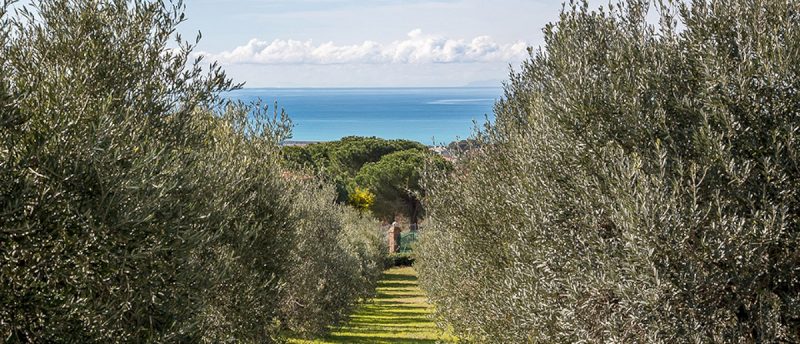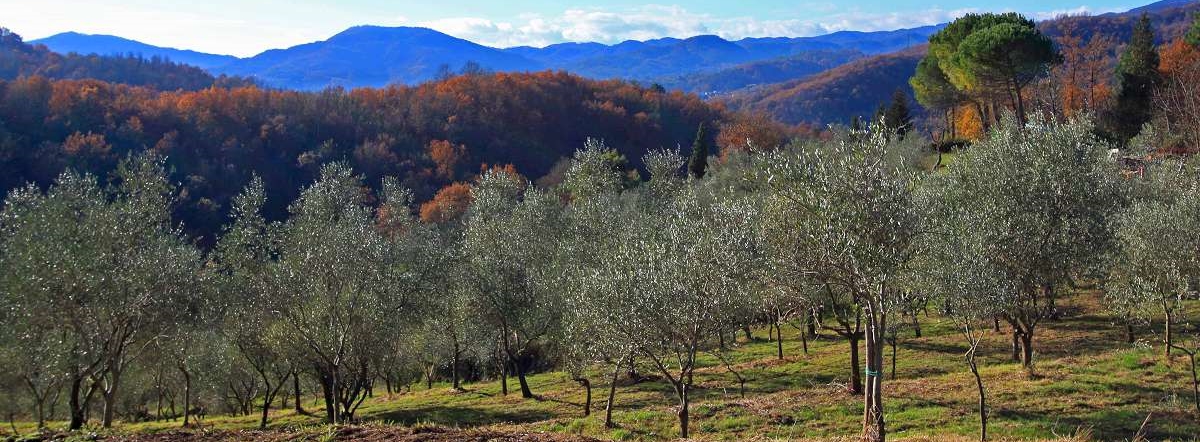 Favourites
Favourites


For many people looking to make a move to Italy, owning and nurturing an olive grove is a long-term dream. If you’re seeking a property with an established plantation, either as a hobby or as a larger scale producer, or if your wish is a place where you can create one from scratch, we can help you make it a reality. In addition to our huge range of beautiful properties, in some areas have expert property managers who can give you all the advice you need and organise everything, from the planting and maintenance to harvesting and pressing.
We are often asked lots of questions about olives and their cultivation, so we have put together some key olive facts.
• Green or Black?
There are no such things as green or black olive trees! A common misconception, but the colour of an olive is determined by its ripeness. Green olives ripen and become black olives. Green olives are usually picked at the start of the harvest season, in September and October. Black olives are picked in November and December, sometimes as late as January.
• Varieties
An olive is just an olive, right? Wrong. There are hundreds of varieties of olive each with their own texture, size and flavour. They get their distinctive qualities from their genetics, their region and climate and when and how they were harvested. There are too many types to list here but some of Italy’s main varieties are: Frantoio and Leccino, often used in gourmet olive oil production; Maurino and Pendolino, often used in oil blends; Castelvetrano from Sicily, Italy’s most ubiquitous snack olive; Cerignola from Puglia, gigantic green olives, often cured and stuffed; Taggiasca from Liguria, petite and usually cured with a mixture of bay leaves, rosemary, and thyme; Gaeta from Puglia, small, purplish-brown and wrinkled and usually cured.
• Growing olives
Where do olives grow best? Olives like hot weather and sunny positions without any shade and tolerate drought well due to their sturdy, extensive root systems. Whilst olives will grow in any light soil and even clay if it is well drained, they thrive in a calcerous soil such as that found on limestone slopes and crags in a coastal climate. In rich soils they are predisposed to disease and produce poorer oil than in an inferior quality soil.
• Planting
How are olive trees planted? Whilst olive trees are sometimes grown from seed, most are grown from cuttings.
• Maintenance
Do olive trees need maintenance? Olive trees can live for several centuries and can remain productive if they are pruned correctly and regularly. Some of the oldest olive trees in the world are thought to be 2000 years old.
• Density
How many olive trees can I plant on my land? Traditionally, olive trees were planted at a spacing of more than 7m (30ft). This is no longer popular except in desert regions. Where conditions are good, orchards are now often planted at a high-density of about 200 to 350 trees per acre (494 to 865 per hectare).
• Harvesting
How are olives harvested? The harvesting process plays a key role in determining the olive’s ultimate flavour and quality. Some producers use sticks or machines to shake the ripe fruit from the trees or leave the olives on the trees until they are so ripe that they fall to the ground without any help. Though cost-efficient, this process doesn’t make for optimal quality as not all olives on a tree ripen simultaneously. The best olive growers use a traditional method and pick the olives by hand. Each olive is selected for ripeness and plucked at just the right moment.
• Curing the fruit
What can I do with my olives? Once harvested, olives can either be cured or used to make olive oil. What is olive curing? Fresh olives are extremely tart to taste. The curing process is a form of fermentation that removes the bitterness. There are several ways to do this but the most common is curing in brine, which takes several months, or with lye, a quicker, though some say, inferior process.
• Oil production
How is olive oil produced? After harvesting, the olives are cleaned, crushed with a stone wheel or hammer mill and then the juice and oil is extracted in a press or a centrifuge.
• Pressing
Do I need my own olive press? Some of our larger properties have their own olive oil production equipment. However, you don’t need to have your own press as many producers will take their olives to the local olive mill (or frantoio) to be processed.
• Cost of pressing
How much will it cost to get my olives pressed at a frantoio? The cost will be determined by the weight of olives and whether or not it is to be bottled and labelled. The weight of olives is often talked about in “quintals”. One quintal is the equivalent of 100kg of olives.
• Quantity of oil
How much oil will I get from my olives? The amount of oil that the olives will produce is determined by many factors including the variety, climate, time of harvest etc but as a very rough guide, one could expect approx. 20 litres of oil from one quintal of olives.
• Yield
How many olives will I get from my trees? Yield depends on tree size and age, variety and growing conditions. Some mature trees which have not been pruned can reach 40-60 feet in height and produce up to 800 kg (8 quintals) of olives while others only produce 50kg (0.5 quintals).
• Oil types
What are the different types of olive oil? There are 4 main categories of olive oil and their classification is regulated based on acidity and processing methods. Most frantoi will advise you and work well within the legal limits. The 4 types of oil are: Extra Virgin, the highest quality oil, unrefined, produced without any chemicals in a cold press and has the lowest acidity levels; Virgin, the next best thing, also unrefined but with a slightly higher acidity level than Extra Virgin; Refined, a cheaper, commonplace oil with higher acidity; Pure, a blend of extra virgin and refined olive oil with the highest acidity.
• Permission
Do I need permission to grow olives? No! Unlike vines (you can only grow up to 2,000 sqm of vines without permission) you can plant as many olive or fruit trees as you wish, and we have property managers who can do it for you if you prefer.
• Properties for sale with olives
Many of our properties have olive groves. We can also have olive groves planted for you! In most areas that is. Whatever your budget and needs, we can help you find the right property for you. From country houses with enough trees for a hobby oil maker, to large estates with several hectares and commercial production. A few examples are listed below. Use our “advanced search” function, ticking the “olive” box, to find many more.
Notifications